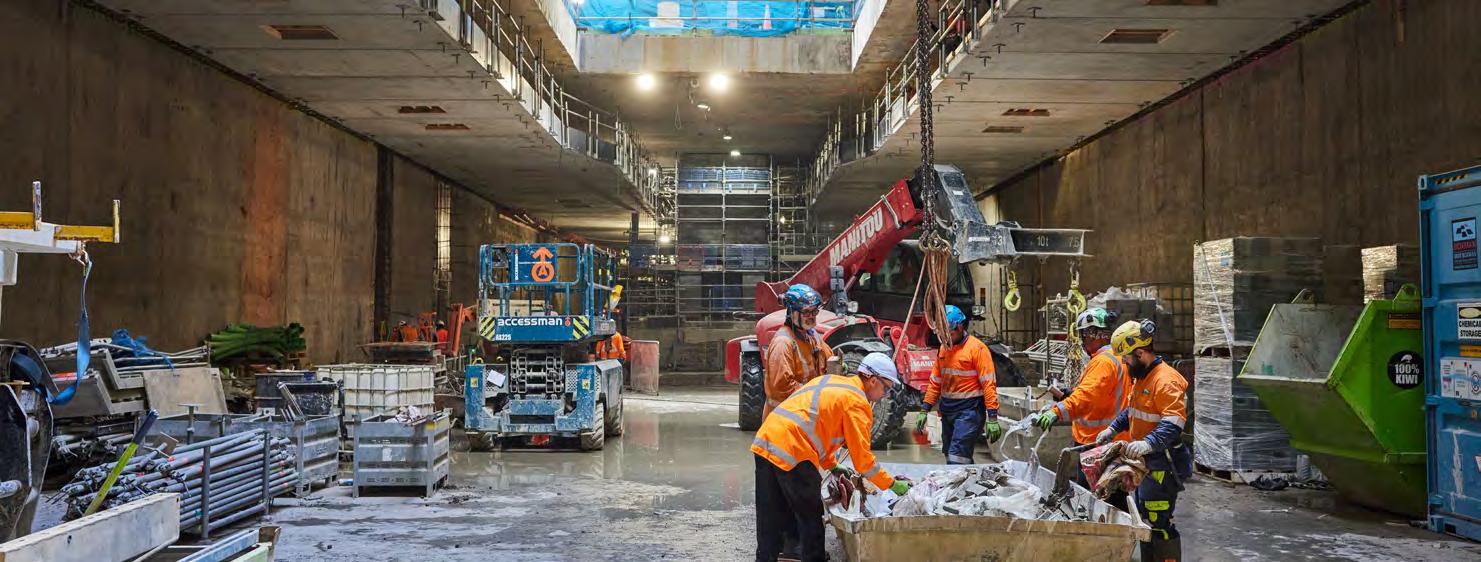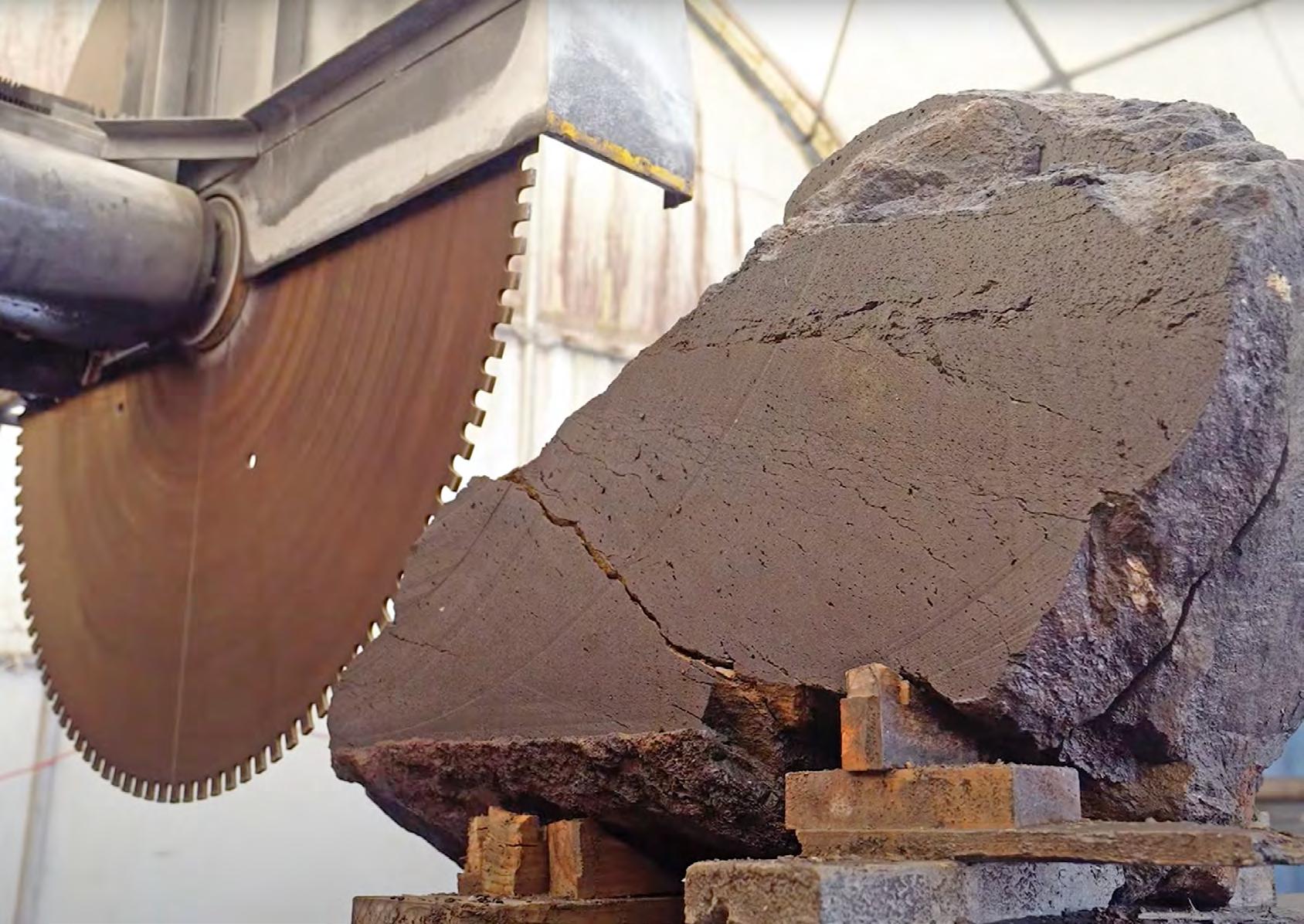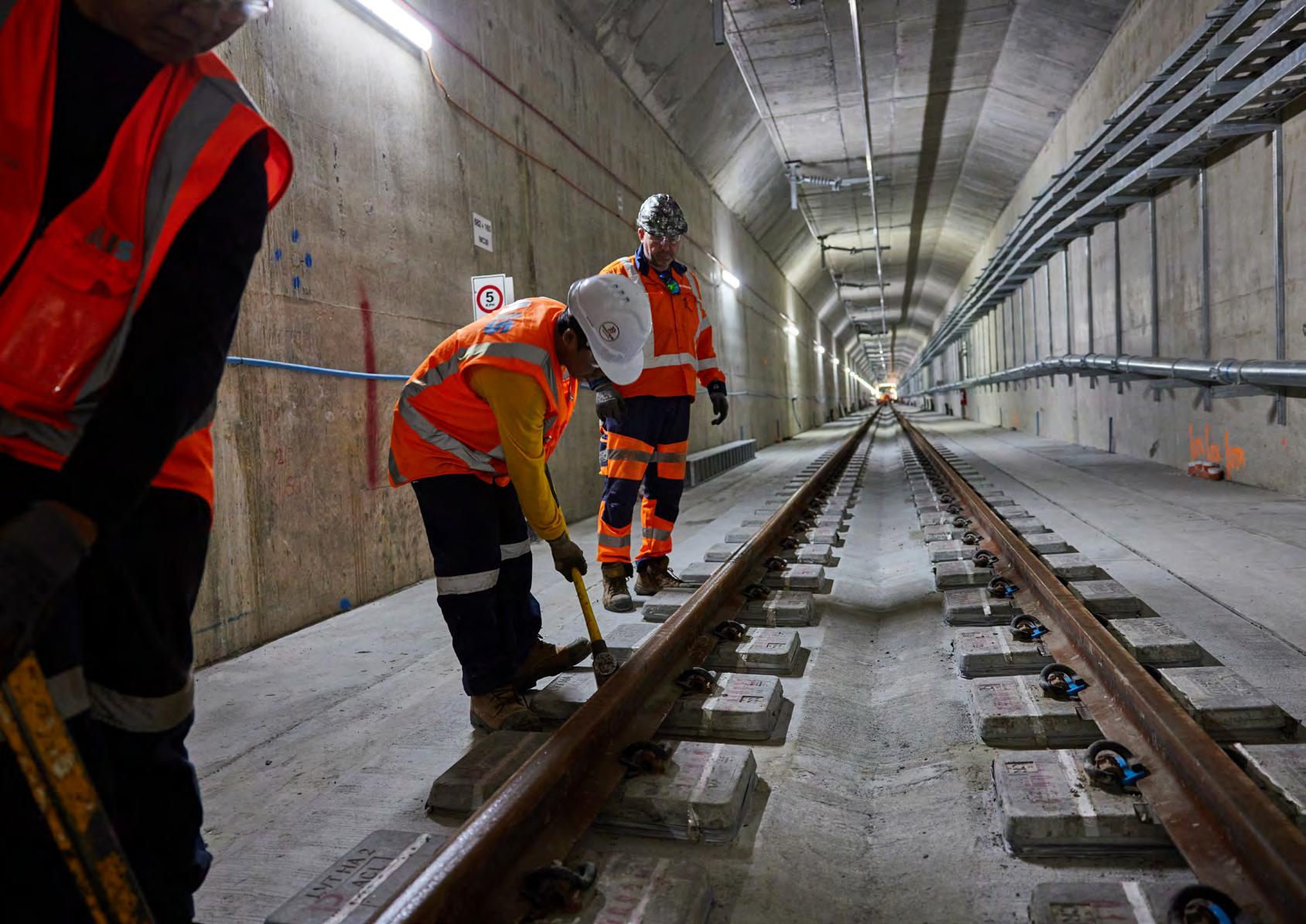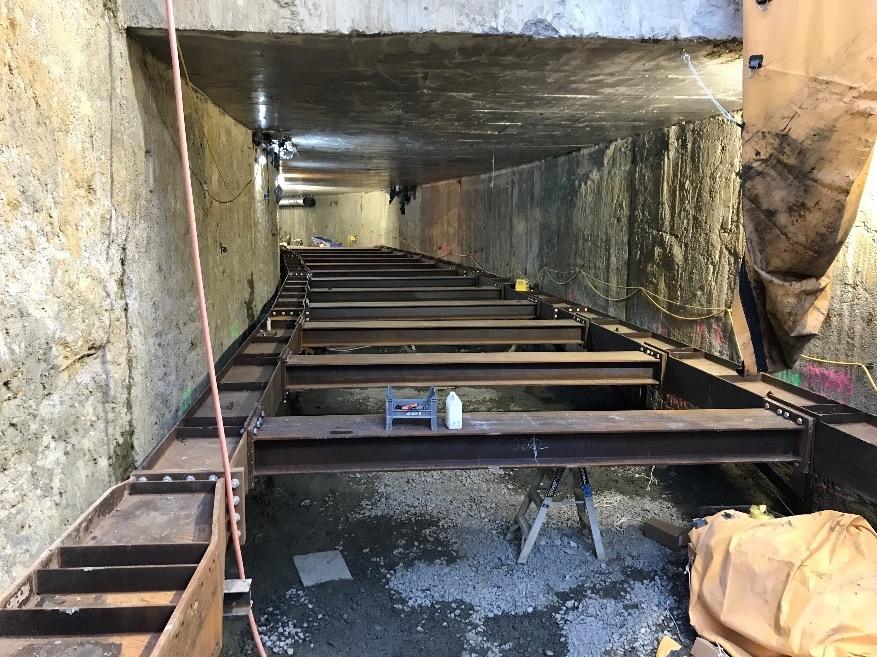
4 minute read
Materials
Link Alliance’s target is to reduce embodied carbon by 15% against the Base Case from materials used to build the project.
The embodied carbon of materials makes up half of the total carbon footprint over the project’s 100-year design life.
With the Detailed Design now completed, a 15.8% reduction is projected. The project is currently on-track to achieve that reduction, with the actual emissions tracking just below the detailed design projection for this stage of the project. Approximately 55% of the footprint to date is due to concrete use, 31% from steel, 8% from cement for grouting and ground improvements and the remainder from aggregate, piping and asphalt and the transportation of materials to site.
As discussed in previous reports, several initiatives have contributed to the projected reduction:
• Maximisation of cement replacement in the project’s concrete mix designs
• Redesign of the Karanga-a-Hape Station to remove the central mined walkway
• Reduction in the amount of materials-intensive mined tunnels at Maungawhau Station
• Change from piles to diaphragm walls (D-walls) across large parts of the project
• Change from bottom-up to top-down construction across the project, reducing the need for temporary steel propping
• Optimisation of the large retaining walls needed at the North Auckland Line connection.
Materials-related greenhouse gas emissions (C3)
Cement replacement
A key construction-phase initiative has been the minimisation of cement use in concrete. Cement has an embodied carbon footprint of almost one tonne for every tonne used. Since construction started the team has maximised cement replacement with fly-ash, a waste product from coal-fired power stations with a much lower embodied carbon even when shipped from overseas. To date this process has allowed Link Alliance to eliminate 18,444 tCO2e, a 21.4% reduction. However, the Covid-19 impacts to the supply chain, especially international shipping, have made sourcing fly-ash more difficult, therefore Link Alliance has had to ration its use, meaning the 26% reduction in footprint that was hoped for at the start of construction, which is regularly achieved in the United Kingdom and Australia, may not be met.
The cement replacement rate achieved to date is more than 10 times higher than the average for New Zealand of around 2%, helping encourage the local concrete supply chain to increase the use of materials that can replace cement. To address this, a Link Alliance supplier is planning to bring blast furnace slag, a by-product from iron production which is another cement replacement material, into New Zealand in 2023. Although this will be too late for use on the CRL project, it will allow even higher rates of cement replacement for future projects than currently achieved.
Platform backfill
One area of the project that has been affected by the scarcity of fly-ash is the 'back-filling' of the spaces under the platforms at Te Waihorotiu Station and Karanga-a-Hape Station. Because craning-in and placing aggregates for this is logistically difficult in these very busy and restricted underground locations, it was decided to fill them with low cement, low-strength concrete, termed 'flowable fill'. This can easily be pumped in and doesn’t require compacting with the approach expected to save weeks of construction time and reduce the amount of high-strength reinforced concrete needed in the platform. It does mean that additional cement is required for the flowable fill when it had been hoped that much of this additional cement would be replaced by fly-ash. However, fly-ash supply constraints meant this was not possible in the second half of 2022, resulting in a likely increase of the footprint of 200-300 tCO2e.
Zero waste to landfill
Half of New Zealand's total waste to landfill is made up of construction and demolition waste. From the outset CRL set an aspirational goal of zero waste to landfill to help shift the dial on best practice within the sector.

Building out waste
CRL Ltd and Link Alliance have already diverted a massive 96% of all construction and demolition (C&D) waste from landfill – 99% when spoil is included.
Careful planning has been undertaken to predict the types and volumes of waste generated on site at every stage of the project. The waste hierarchy has been put into practice to recover as much material as possible with a strong culture of avoiding, reducing, and reusing waste, and ensuring there are suitable places in which to divert clean fill and recycling.
Waste types generated on CRL sites
With the TBM run now complete, the amount of spoil being removed from site has decreased dramatically. Spoil has accounted for over 90% of waste leaving sites. Construction and demolition waste as well waste from project offices and lunchrooms, continues to be a strong focus. Ongoing education, engagement and having passionate advocates on site ensures teams remain determined to maximise waste diversion.
100%
96.4%
57,802 tonnes of C&D waste diverted
64%
193 tonnes of office waste diverted
1,644,165* tonnes of spoil diverted
Cumulative data for Contract 3
* Excludes contaminated spoil (49,015)

Case Study
Basalt pavers

The design for the reinstatement of Fenton Street, next to the NAL rail corridor, includes basalt 'bluestone' paving. Typically, this type of paving is sourced from China. Because a large number of basalt boulders had been dug up as part of the excavation works, Link Alliance decided to investigate whether this material could be turned into pavers locally. As a result, 60 tonnes of basalt boulders have been cut and shaped to provide pavers for 120m2 of streetscape at a similar cost to importing from China. Taking this approach has had multiple benefits: it provided commercial opportunities for a local business, reused what would otherwise be waste material, saved 6.6 tCO2e of greenhouse gas emissions associated with transportation, used the material in the same place it was excavated, thereby maintaining a connection between the past and the future, and reduced the supply chain risk associated with global shipping delays that have resulted from Covid-19.

Case Study
Propping steel at NAL

Link Alliance has extensively used ‘top-down’ construction on City Rail Link. This involves underground structures constructed by building the walls and roof structure in the ground first and then excavating down to the final depth and building the floor last. This means the walls are prevented from deforming inwards by the roof as excavation is undertaken, avoiding the need for temporary steel props. In some instances, however, steel propping has still been needed due to the depth of the excavation, such as at the Eastern Grade Separation tunnel under Mt Eden Road. To avoid the 82-tonnes of steel being cut up and recycled as scrap, Link Alliance has removed them whole and sold them to Egmont Industrial Supply, who will sell them to other projects for reuse, avoiding the emissions associated with steel recycling.










